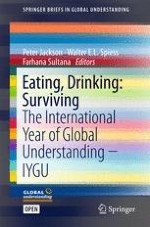
Open Access 2016 | OriginalPaper | Buchkapitel
Integrated Water Resources Management as a New Approach to Water Security
verfasst von : Olivier Graefe
Erschienen in: Eating, Drinking: Surviving
Aktivieren Sie unsere intelligente Suche, um passende Fachinhalte oder Patente zu finden.
Wählen Sie Textabschnitte aus um mit Künstlicher Intelligenz passenden Patente zu finden. powered by
Markieren Sie Textabschnitte, um KI-gestützt weitere passende Inhalte zu finden. powered by